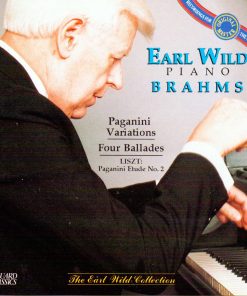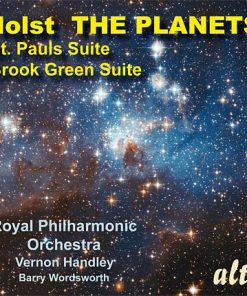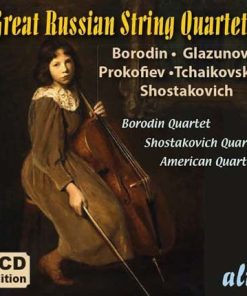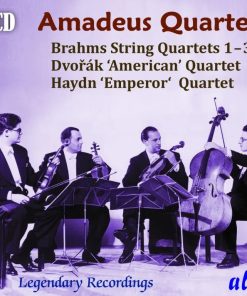SHAKESPEARE: The Sweet Power of Musicke – New York Consort of Viols, Tom Klunis, Sheila Schonbrun (Digital Download) ORPHEUS
$ 5,99 $ 3,59

The Sweet Power of Musicke is appraised in some thirty lines of verse, spoken by Lorenzo to Jessica while musicians play, just before Portia arrives home at Belmont in the last scene of The Merchant of Venice. The speech is Shakespeare’s most extensive single discourse on music, which he calls for and refers to frequently in his plays. The varieties of music on this recording would have been familiar to his contemporaries, particularly to the aristocrats and courtiers, since indoor, courtly music was generally written for the viols, the lute, or the virginals—a smaller version of, as well as a synonym for, the harpsichord. When Shakespeare wrote Sonnet 128, he seems to have thought that the “jacks’ were the wooden keys of a virginals rather than the mechanisms that plucked the strings when keys were depressed.
The tunes are popular as well as courtly, the most popular being those old ballad favorites Walsingham, Bonny Sweet Robin, and Greensleeves. Although originally thoroughly secular love ballads, the three tunes were used for other texts adapted to religious purposes as early as the sixteenth century—as settings for versified psalms, carols, or hymns. Shakespeare makes use of this practice as a metaphor for the contrast between Falstaff’s words and his “disposition’” in The Merry Wives of Windsor when he has Mistress Ford remark that ”they do no more adhere and keep place together than the Hundredth Psalm to the tune of Greensleeves.“ His only other reference to the tune is also in The Merry Wives, where, in the last scene of the play, Falstaff, wearing the buck’s head prefaces his embracing of Mistress Ford with the invocations: “Let the sky rain potatoes; let it thunder to the tune of Greensleeves.” It is pertinent in both episodes to recall that ‘Lady Greensleeves’ was a euphemism for a woman of easy virtue.
Bonny Sweet Robin uses the same tune as Robin is to the greene wood gone; the original words to this ballad are lost, unless Ophelia’s “for bonny sweet Robin is all my joy” is the last line of one of its stanzas. Walsingham was popular well before the spoliation of the shrine of Our Lady in that Priory near Norwich in 1538. Ophelia’s ‘”How should I your true-love know’” echoes the ballad text; the tune was used for versified psalms.
The dance music includes three of the principal kinds of court dances described by Thomas Morley, a famous musician and probable friend of Shakespeare, near the end of his A Plaine and Easie Introduction to Practicall Musicke (1597). These are, from the slowest and stateliest to the fastest and most vigorous, the Pavan, the Alman, and the Coranto. Morley writes that the Pavan is ‘a kind of staid music ordained for grave dancing,” the Alman, though faster, is also a “heavy dance (fitly representing the nature of the people whose name it carrieth) so that no extraordinary motions are used in dancing of it,” and he Coranto involves a good deal of “travising'” (i.e: traversing) and “and turning.”

In Praise of Music
1. Henry VIII, Act III, Scene I: “Orpheus with his lute made trees” (0:31) – Tom Klunis
2. Richard Dering (1580-1630): Pavan (2:16) – New York Consort of Viols
3. The Tempest, Act V, Scene I: “Where the bee sucks, there suck I” [Music by Robert Johnson (1583-1633)] (0:50) – Sheila Schonbrun, New York Consort of Viols
4. Anon: Greensleeves (2:31) – New York Consort of Viols
5. Thomas Lupo (d. 1628): Fantasia (2:19) – New York Consort of Viols
6. Sonnet 128: “How oft, when thou, my music, music play’st” (0:43) – Tom Klunis
7. Thomas Tomkins (1573-1656): Barafostus Dreame (5:35) – New York Consort of Viols
Love
8. Pericles, Act I, Scene I: “You are a fair viol, and your sense the strings” (0:13) – Tom Klunis
9. Tobias Hume (d. 1645): Touch me lightly (2:23) – New York Consort of Viols
10. Romeo and Juliet, Act II, Scene II: “Two of the fairest stars in all the heaven” / Anthony Holborne (d. 1602): Coranto: Heigh Ho Holiday (1:40) – Tom Klunis, New York Consort of Viols
11. Anon: When Daphne from fair Phoebus did fly / Manchester Viol Book [mid 17th century with Variations by Jacob van Eyck (1590-1657)]: lnstrumental lnterlude (3:15) – Sheila Schonbrun, New York Consort of Viols
12. Thomas Simpson (1582 – c.1625): Bonny Sweet Robin (3:03) – New York Consort of Viols
13. Sonnet 116: “Let me not to the marriage of true minds” / Anon: Fortune my Foe (0:47) – Tom Klunis, New York Consort of Viols
Death
14. Richard II, Act II, Scene I “They say the tongues of dying men” (0:46) – Tom Klunis
15. Tobias Hume: Death (4:54) – New York Consort of Viols
16. Anon, arr. by Michael Jaffee: O Death, Rock Me Asleep (2:31) – Sheila Schonbrun, New York Consort of Viols
17. Romeo and Juliet, Act V, Scene III “Ah, dear Juliet, Why art thou yet so fair?” (0:59) – Tom Klunis
Ophelia’s Songs – Sheila Schonbrun, New York Consort of Viols
18. Hamlet, Act IV, Scene V: “How should I your true love know” (Music: Anon – Walsingham tune) (1:22)
19. Hamlet, Act IV, Scene V: “They bore him barefac ‘d on the bier” (Music: Lord Thomas and Fair Ellinor) (2:15)
20. Manchester Viol Book: Robin is to the greene wood gone (1:03) – New York Consort of Viols
21. Anthony Holborne: Pavana Ploravit (1:58) – New York Consort of Viols
Life
22. Hamlet, Act II, Scene II “What a piece of work is a man” (0:22) – Tom Klunis
23. Tobias Hume: Life (1:35) – New York Consort of Viols
24. Thomas Ravenscroft (c. 1590-c. 1633) Fantasia No. 4 (2:49) – New York Consort of Viols
25. Orlando Gibbons (1583-1625): The Queenes Command (1:21) – Edward Smith, harpsichord
26. Manchester Viol Book: Whoope, do me no harme (1:08) – New York Consort of Viols
27. The Merchant of Venice Act V, Scene I “One is never merry when one hears sweet music” (1:07) – Tom Klunis, New York Consort of Viols
28. Twelfth Night, Act I, Scene I “If music be the food of love, play on” / Thomas Tomkins: Alman (1:37) – Tom Klunis, New York Consort of Viols
| CHOOSE YOUR DIGITAL DOWNLOAD FILE TYPE | MP3, FLAC, Apple Lossless |
|---|
Fast Shipping and Professional Packing
Due to our longstanding partnership with UPS FedEx DHL and other leading international carriers, we are able to provide a range of shipping options. Our warehouse staff are highly trained to pack your goods exactly according to the specifications that we supply. Your goods will undergo a thorough examination and will be safely packaged prior to being sent out. Everyday we deliver hundreds of packages to our customers from all over the world. This is an indication of our dedication to being the largest online retailer worldwide. Warehouses and distribution centers can be located in Europe as well as the USA.
Orders with more than 1 item are assigned processing periods for each item.
Before shipment, all ordered products will be thoroughly inspected. Today, most orders will be shipped within 48 hours. The estimated delivery time is between 3-7 days.
Returns
The stock is constantly changing. It's not entirely managed by us since we are involved with multiple parties such as the factory and our storage. The actual stock can fluctuate at any time. Please understand it may happen that your order will be out of stock when the order is placed.
Our policy is valid for 30 days. If you haven't received your product within 30 days, we're not able to issue either a return or exchange.
You are able to return a product if it is unused and in the same condition when you received it. It must also still remain in the original packaging.
Related products
Digital Music Downloads
Digital Music Downloads
Digital Music Downloads
EARL WILD PLAYS BRAHMS & LISZT (DIGITAL DOWNLOAD) OMEGA VANGUARD
Digital Music Downloads
HOLST: THE PLANETS SUITE; ST PAUL’S SUITE – HANDLEY, ROYAL PHILHARMONIC (Digital Download) ALTO
Digital Music Downloads
BRAHMS, DVORAK & HAYDN: QUARTETS – AMADEUS QUARTET (DIGITAL DOWNLOAD) ALTO
Digital Music Downloads
Digital Music Downloads
BEAUTIFUL GUITAR – An Hour of Gorgeous Guitar (DIGITAL DOWNLOAD) BACH GUILD
Digital Music Downloads
Digital Music Downloads
Digital Music Downloads
BEAUTIFUL BEETHOVEN – An Hour of Beloved Beethoven (DIGITAL DOWNLOAD) BACH GUILD
Digital Music Downloads
CHOPIN: POLONAISES – Alfred Brendel (DIGITAL DOWNLOAD) VANGUARD CLASSICS
Digital Music Downloads
GREAT RUSSIAN STRING QUARTETS (DIGITAL DOWNLOAD BOXED SET) ALTO
Digital Music Downloads
IDA HAENDEL & JOSEF HASSID: THE POLISH-JEWISH VIOLIN PRODIGIES (DIGITAL DOWNLOAD) PARNASSUS
Digital Music Downloads
Digital Music Downloads
Digital Music Downloads
Digital Music Downloads
Digital Music Downloads
Digital Music Downloads
Digital Music Downloads
Beautiful Bach – One Hour of Bach’s Most Beautiful Melodies (DIGITAL DOWNLOAD) BACH GUILD
Digital Music Downloads
BRAHMS, DVORAK & HAYDN: QUARTETS – AMADEUS QUARTET (2 CDS + FREE MP3) ALTO
Digital Music Downloads
17 JEWELS IN THE CROWN OF THE BAROQUE – CAMERATA OF ST. ANDREW (DIGITAL DOWNLOAD) VANGUARD CLASSICS
Digital Music Downloads
GRETRY/GLUCK/RAMEAU/PURCELL: SUITES – Hartford Symphony Orchestra, Fritz Mahler VANGUARD CLASSICS
Digital Music Downloads
Digital Music Downloads
BEAUTIFUL FLUTE – An Hour of the Finest Flute Melodies (DIGITAL DOWNLOAD) BACH GUILD
Digital Music Downloads
A MEDIEVAL CHRISTMAS – PRO CANTIONE ANTIQUA (Digital Download) ALTO
Digital Music Downloads
CHRISTMAS IN OXFORD – Magdalen College Choir & John Harper (Digital Download) ALTO







































